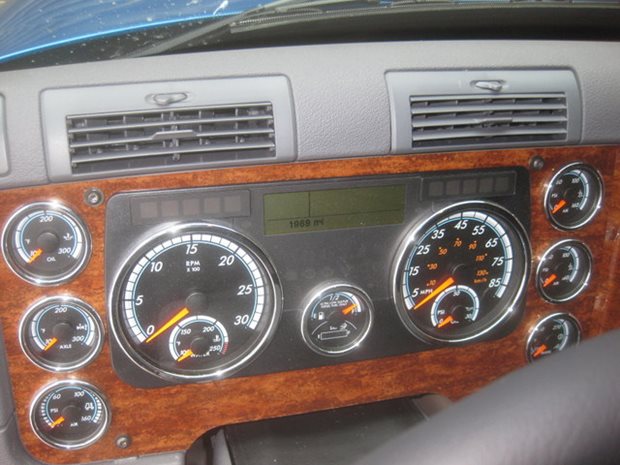
What would the readouts be in different conditions than normal?
If you follow my blog, then you know that my normal run is from Charlotte, NC to Laredo, TX each week. A couple of weeks ago, I had a truck show to attend and took a shipment off my normal route and headed for Michigan. I was interested to see how my fuel mileage would differ on this route vs my normal run as it’s more of a challenge. I experienced the Appalachian Mountains and was pulling a heavy shipment as well.
I purchased fuel the week prior in Meridian, Mississippi. The load weight at the time was 28,000 lbs. in the trailer. I reset my fuel mileage readout on the dash, cruised through Atlanta on my way to Charlotte and experienced very heavy traffic Friday night during my drive home on interstate 77 North. After this leg of the fill-up, the fuel mileage readout was at 9.6 mpg which included a passive regen. On Monday, I picked up a 42,000 lb. load of metal racks to be delivered to Brighton, Michigan. Before I left on this leg of the trip, I reset one of my two dashboard readouts as I wanted to catch what the readout was in this more demanding operating condition.
I left Cleveland, NC on US 70 to I 77 North to US 33 in Ohio, followed by 270 around Columbus, OH to US 23, I 75 North to I 475/US23 to I 96. I unloaded in Brighton, MI with a trip mileage readout of 8.4 mpg which I thought was very good for conditions. After leaving Brighton, I drove 38 miles empty and picked up a 42,575 load of engines to be delivered in the Carolina’s. Due to construction, I needed to use US 24 (Telegraph Rd.) all the way to I 75. I think I must have caught every traffic light as they all turned “red.” Finally, I arrived at the Petro in North Baltimore, OH to refuel my truck 1,462 miles since my last fill up in Meridian, MS. The dashboard readout since Meridian, MS was 8.9 mpg. The figures as calculated on paper from the pump readout was 8.877 mpg. Also, there were two sections of this trip which I ran empty. One was 38 miles and the other leg was 42 miles. As I noted previously, this trip included heavy traffic in Atlanta, Charlotte, the mountains in West Virginia and a passive regen.
After I fueled in North Baltimore, I left to go attend the Expedite Expo in Wilmington, Ohio. I proceeded down I-75 to Dayton, OH to US 35 to US 68 and arrived at the expo and stayed for 3 days. Without any shore power available, I started the truck and left it idle for a 1/2 hour each day to keep the truck batteries charged because my refrigerator was full of food.
On Sunday morning, I left Wilmington, OH and headed onto I 71 North to US 35 South, I 64 E, I-77 S and delivered my load of engines to the Carolina’s. I then drove 42 miles empty to Charlotte, NC to pick up my normal load for Laredo, TX. This load weighted just shy of 30,000 lbs. My dashboard readout since the last fill-up in North Baltimore was reading 8.6 mpg. I left on I 85 South to 285 around the north side of Atlanta, I 20 E and drove right by Meridian, MS where I normally purchase most of my fuel. I looked at the gallons used and decided that I stood a good shot at making my delivery point in Laredo, TX without fueling. I continued on to Laredo, TX via I 59, I 12, I 10, and I 35. I dropped off my trailer to be unloaded and reloaded and bobtailed over to the truck stop to fuel and shower which is approximately 7 miles.
When I arrived in Laredo, TX I had traveled 2,011 miles since my last fill-up in Baltimore, Ohio. My dashboard read 9.8 mpg. I pumped in 208.216 gallons of diesel fuel into my twin 120 gallon fuel tanks on my Cascadia Evolution for a paper and pen figure of 9.658 mpg. The cruise speeds for this entire trip were from 63 to 65 MPH where legal and safe .
| Being aerodynamic from the leading enge of the front bumper to the tail of the trailer pays off great dividends . Add the Detroit DD15 engine DT12 transmission and the results are simply amazing. |
  |